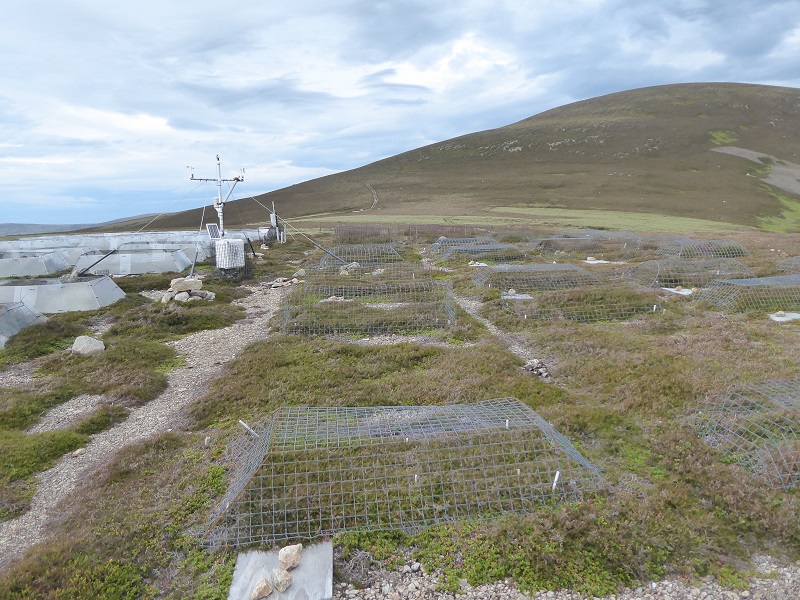
Scotland has almost no natural treeline and lacks the montane scrub zone which is found in other mountainous areas such as Norway and the Alps because of a long history of overgrazing (by sheep and deer) and excessive burning. It is therefore very welcome that the Cairngorms National Park Authority attaches a high priority to the restoration of these habitats in both its draft Forestry Strategy (see here) and draft Cairngorms Nature Action Plan (see here). The key issue however is how this is done, by planting or natural regeneration and the Cairngorms Nature Action Plan appears to support planting even in areas where natural regeneration is happening or is likely to occur in response to reduced grazing or burning pressures.
I therefore have submitted the following proposal to the CNPA to modify the draft Action Plan:
Question 3. Do you agree with the objectives for ecosystem restoration?
Please note this is a qualified “Yes”. With regard to the following statement:
“Plant high altitude, mountain woodland species, from a suitable stock and in suitable locations, to act as a seed source in the core of the Park”
This needs to be modified, as suggested below:
“Plant high altitude, mountain woodland species, from a suitable stock, in watersheds which currently lack semi-natural woodland, so that a mosaic of wood and shrub habitats is established from low to high altitude.”
It is important that the phrase “in the core of the Park” is removed from the Nature Action Plan. The emphasis on “core” could lead to assumptions that montane woodland planting should be carried out on the flanks of the main mountain massif in the Park. This would be damaging to the aesthetic and scientific values associated with the Cairngorms plateau and its surrounding slopes. These areas support existing remnants of the Old Caledonian Pinewood, descended by natural regeneration through 1,000s of years since the last Ice Age.
In all the slopes which surround the main massif, except for Coire Cas on Cairn Gorm, the re-establishment of montane woodland should be by natural regeneration, with the control of grazing being the only technique used to achieve this. The same principle should apply in all watersheds elsewhere in the Park where extensive tracts of native woodland are still present on the lower slopes. This would still leave the majority of watersheds in the Park available for more intensive forms of management, including planting, so that the Park’s montane woodland re-establishment targets could be met. A further constraint should be that high altitude planting should not be carried out in isolation. All such approved planting schemes should involve planting (plus regeneration from any existing limited wood and shrub remnants), from low to high altitude, so that a mosaic of wood and shrub habitats is gradually established up through the watershed as far as the natural tree-line.

An exception to the natural regeneration only policy in core areas should be made for Coire Cas where this much modified landscape can accommodate more intensive woodland management techniques. An extensive planting programme of native montane species of suitable stock should be carried out here, complemented by the further natural regeneration of existing trees and shrubs in Coire Cas. Due regard would need to be taken of the wide range of recreational activities in this area, along with the educational and interpretive opportunities which such a woodland re-establishment programme would provide.

The montane woodland re-establishment programme in the Park has a whole needs to be supported by much more research and monitoring of the existing remnants. Very little appears to be known of both the distribution and condition of the high altitude wood, shrub and herb communities. Collecting such information needs to be carried out alongside a programme for collecting seed and stock material from different species and genotypes for onward propagation in greenhouse or nursery conditions. This will provide the raw material for those locations where future montane community re-establishment through planting is appropriate.

In an ideal world Natural regeneration would be great, but with the over grazing stated above it seems likely that there is little nearby forestry that would promote natural regeneration, so maybe there needs to be a bit of a kick on the forestry and not just rely on next to non existent natural growth
The evidence today, both from Scotland and from areas in Norway with similar geology and climate, is that there will be prolific natural regeneration if remnant woodland is present and grazing is cut down to an appropriate level. Elsewhere I agree planting may be needed as in Drumochter Pass and many moorland areas in the eastern sector of the Park where repeated burning and overgrazing has extinguished all native tree and shrub remnants. Such planting needs to be accompanied by effective deer culling – current population levels in many areas are absurd and compulsory culls are decades overdue.